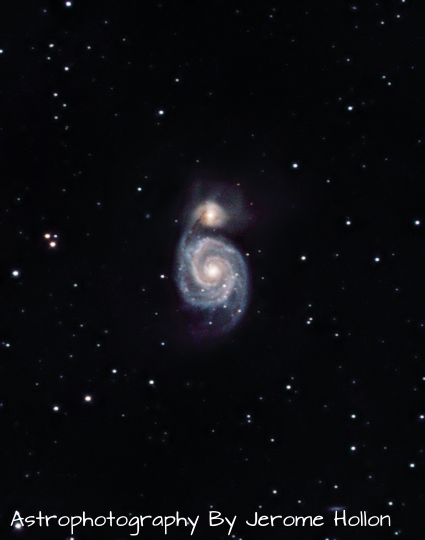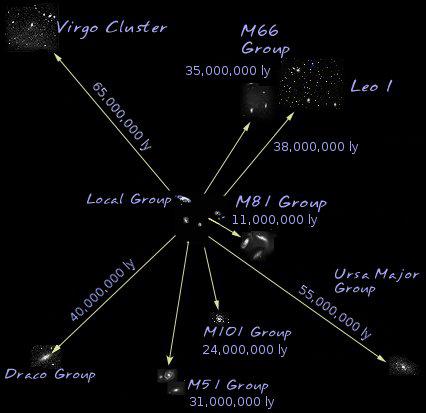Whirlpool Galaxy
The Whirlpool Galaxy (M51) the first galaxy to be classified as a spiral galaxy, even before our own was classified as one. It’s a spiral galaxy interacting with its companion galaxy.
The M designation means that it was cataloged by Charles Messier a famed comet hunter of the 1700s. His catalog was of “uninteresting” nebula and star clusters, uninteresting because he was solely interested in hunting comets. Today, his catalog is a wealth of easy to spot galaxies, nebulas and other objects that are a favorite of beginner astronomers. Since it was cataloged before the advent of the modern telescope, Messier did not know it was two galaxies. Today, both galaxies are referred to as “M51” but if you want to get technical, the big one is M51a and the smaller one is M51b.
The whirlpool galaxy is significantly smaller than our own. It’s 76,000 lightyears in diameter, where ours is over 200,000 lightyears. But not just in diameter, it’s estimated that the mass of the whirlpool galaxy is just over tenth of the Milky Way is. There are a lot of similarities though, and not just in being a spiral. Like our galaxy, there is a supermassive blackhole at the center of the whirpool galaxy.
The whirlpool galaxy is part of a group of galaxies, but is the brightest member of the group. The group is named after it, the M51 Group. The other well known galaxy in the group is the Sunflower Galaxy. No other galaxy in the group have a common name. This group is neighbors to the M101 group, another galaxy group named after the Pinwheel galaxy at it’s center. Both groups are part of the Virgo Supercluster, which is the local cluster of galaxy groups that we belong to. The whirlpool galaxy is almost our neighbor! You can see a map of it to the right, with our galaxy cluster (the local group) in the center, and the M51 group at the bottom. Click on it for a larger image!

